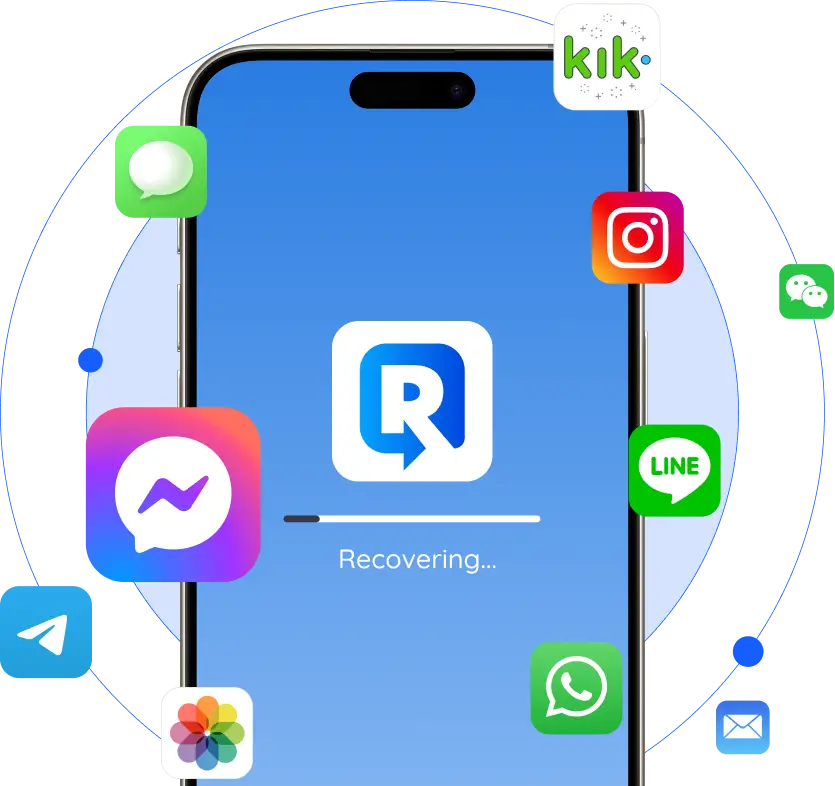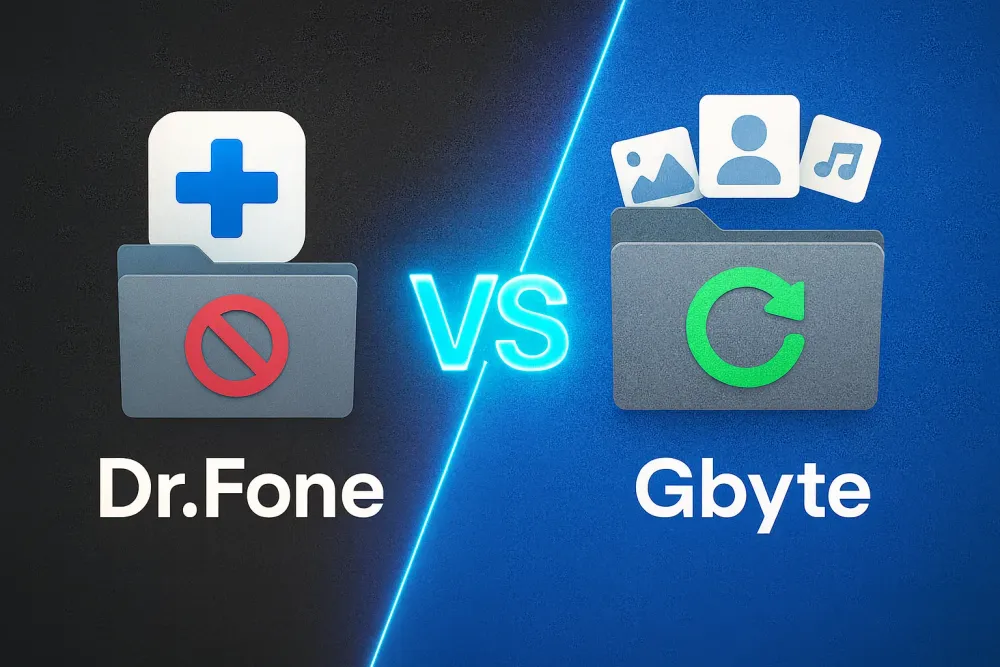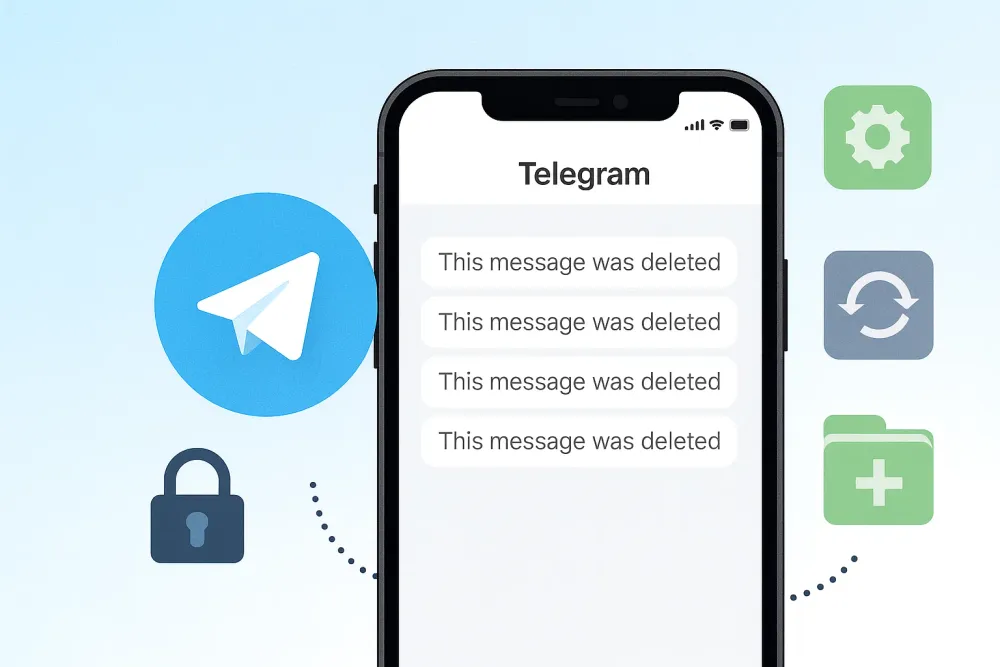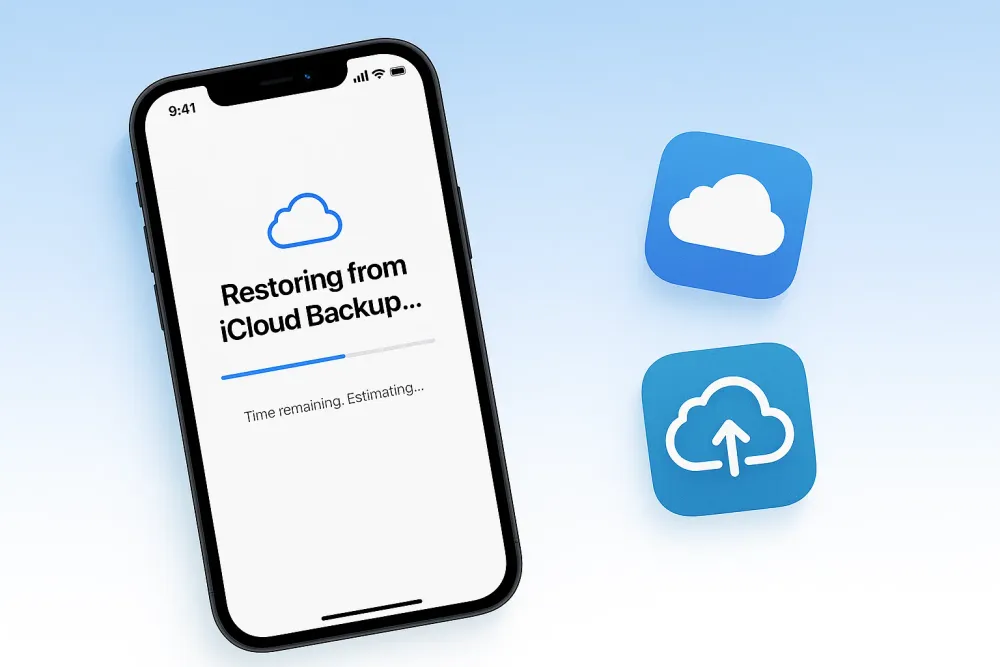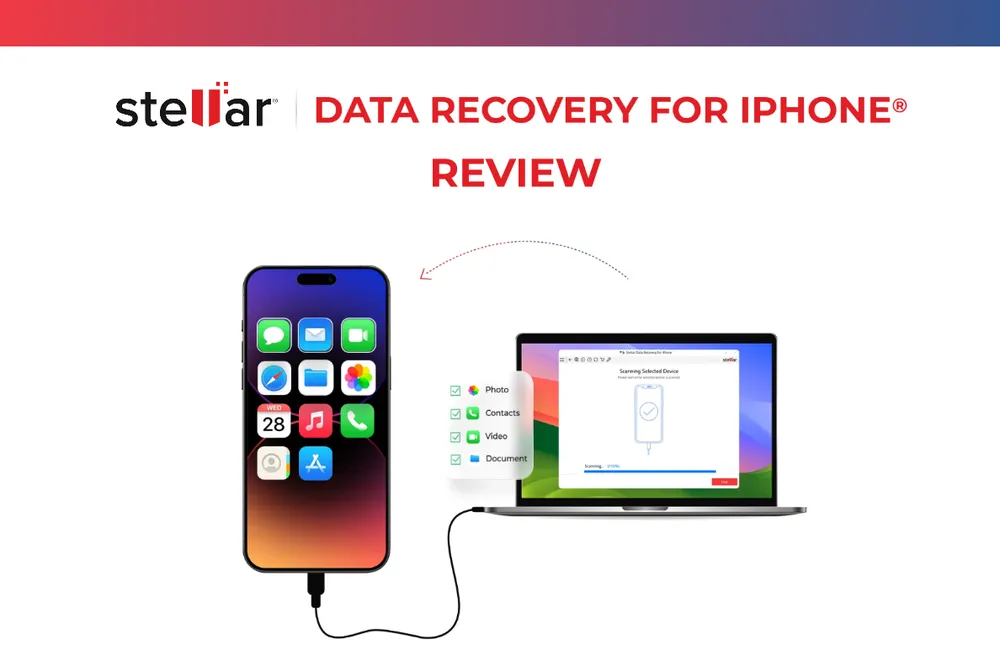We Tested 10 Video Recovery Software—Here’s What Actually Works (Free & Paid)
Deleted a video from your PC, iPhone or Android? You're not alone—and you're not out of options.
We tested over 10 popular video recovery software tools, including both free and paid options. What we found was eye-opening:
Some “free” apps couldn’t recover anything unless you paid.
Others worked—but only for small files or limited formats.
A few paid tools, however, recovered full-length 4K videos even after 30 days.
In this guide, we’ll show you:
✅ The best free video recovery software (what works, what doesn’t)
💻 The most effective paid recovery tools (and whether they’re worth it)
📊 A side-by-side comparison of performance, features, and value
If you're looking to recover deleted video files—from phone storage, recycle bin, or even formatted drives—this is the guide to read before downloading anything.

Part 1. A Quick Summary of 10 Best Video Recovery Software
Choosing the right video recovery software can be overwhelming with so many options available. To make it easier, here’s a quick overview of the 10 best video recovery tools that we tested and recommend for recovering deleted or lost video files from PCs, Android devices and iPhone.
Software Name | Best For | Key Feature | Price |
Recuva | Simple, recent PC deletions | Completely free with a user-friendly interface | Free |
PhotoRec | Deeply deleted files, advanced users | Powerful deep scan, recovers files by signature | Free (Command-line) |
Windows File Recovery | Windows users comfortable with tech | Microsoft's official, free command-line tool | Free |
Google Photos / iCloud | Mobile phone users with backup enabled | Automatically backs up, keeps deleted videos for 30-60 days | Free (Cloud Service) |
TestDisk | Recovering lost partitions | Restores entire partitions to recover all files | Free |
Gbyte iOS Recovery | iPhone users who want to verify data before paying | Free scan and preview of all recoverable data from iCloud backups | Paid (with free scan & preview) |
EaseUS MobiSaver | Wide range of data recovery from backups | Supports recovery from iOS devices, iTunes, and iCloud backups | Paid (with free version) |
Dr Fone | Accessing existing data on a phone | Cannot recover permanently deleted files, only displays existing data | Paid |
D-Back | Accessing data from backups, not for deleted files | Misleadingly advertised as a recovery tool, cannot restore deleted files | Paid |
UltData | Accessing data from iCloud backups | Has a security flaw (resets iTunes password) and cannot recover permanently deleted files | Paid |
Part 2. Top 5 Free Video Recovery Software
1. Recuva (for Windows)
Best for: Beginners recovering recently deleted video files from Windows PC
How It Works: Recuva scans the file system (NTFS/FAT) for data blocks marked as "deleted" but not yet overwritten. It then reconstructs these fragments into usable video files, especially if the drive hasn’t been heavily written to since deletion.
Key Features:
Quick and deep scan options
File preview before recovery
Supports MP4, AVI, MOV, and more
Secure file overwrite to prevent future recovery (privacy protection)
Pros
- User-friendly wizard interface
- Fast and lightweight
- Great for simple accidental deletions
Cons
- Windows only
- May struggle with fragmented or overwritten files
Price: Free (Pro version from $19.95)
2. PhotoRec (Windows, macOS, Linux)
Best for: Tech-savvy users needing raw video recovery on multiple platforms.
How It Works: PhotoRec bypasses the file system and directly scans the raw disk surface for known file signatures (MP4, AVI, 3GP, etc.), making it ideal for recovering data from corrupted or reformatted drives.
Key Features:
File signature-based recovery
Cross-platform support
Works on hard drives, SD cards, USB sticks
Recovers over 480 file formats
Pros
- Extremely powerful and effective
- Free and open-source
- Great for damaged or reformatted drives
Cons
- No graphical interface (command-line only)
- No file names or original folder structure preserved
Price: 100% Free
3. Windows File Recovery (Windows 10/11)
Best for: Advanced Windows users who prefer command-line recovery.
How It Works: Windows File Recovery uses a command-line interface to scan drives in different modes (Regular, Extensive, Segment, and Signature) depending on file system type and damage severity.
Key Features:
Four recovery modes
Supports NTFS, FAT, exFAT, and ReFS file systems
Recover from local HDDs, SSDs, USBs
Pros
- Built-in Microsoft tool (no third-party needed)
- High compatibility with modern Windows drives
- Customizable file filters (e.g., only .mp4)
Cons
- No GUI (requires CMD usage)
- Limited file previews
- Only works on Windows 10/11
Price: Free via Microsoft Store
4. Google Photos / iCloud (Android & iPhone)
Best for: Users who deleted videos recently and had cloud sync enabled.
How It Works: These cloud services store photos and videos in the trash for 30–60 days after deletion. Recovery is as simple as checking the Trash folder and restoring items.
Key Features:
Cloud-based backup and recovery
Simple restore process via mobile or web
No technical skills required
Works across multiple devices
Pros
- Extremely easy to use
- Instant restore without software
- Protects against permanent loss
Cons
- Only works if auto-backup was enabled
- Time-limited retention in trash (30–60 days)
- No recovery for videos deleted before syncing
Price: Free (up to storage limit)
5. TestDisk (Windows, macOS, Linux)
Best for: Rebuilding lost partitions and recovering videos from corrupted drives.
How It Works: TestDisk repairs damaged partition tables and boot sectors. It can also list deleted files in the file system, allowing recovery by copying them to a safe location.
Key Features:
Partition repair and boot sector restoration
Compatible with NTFS, FAT, exFAT, ext4
Integrated file undelete feature
Works alongside PhotoRec
Pros
- Deep recovery options
- Open-source and free
- Excellent for raw or unallocated drives
Cons
- Command-line interface
- Requires technical knowledge
- Not ideal for casual users
Price: 100% Free
Part 3. Top 5 Paid Video Recovery Software
Gbyte iOS Recovery
Best for: iPhone users who want to confirm their data is recoverable before paying.
How It Works: Gbyte iOS Recovery works by analyzing snapshots from your iCloud Backup. It compares different backup points to identify data that has been deleted from your device, then presents it for recovery.
Key Features:
Comprehensive Data Support: Can recover photos, videos, messages, contacts, WhatsApp, Line, and more.
Free Scan & Preview: Allows you to view all recoverable data before you make a purchase.
Pros
- The tool to offer a free preview of all recoverable data, ensuring you only pay if your video can be restored.
- Clear and straightforward process.
Cons
- Requires a paid license to complete the recovery.
EaseUS Data Recovery Wizard
Best for: Users who need a wide range of data recovery options from backups.
How It Works: EaseUS MobiSaver can recover deleted data from both Android and iPhone devices. Its primary method for iPhones is through iCloud backups, which allows it to retrieve data that has been deleted from your device but is still present in an iCloud Backup. Because of this, the software is largely ineffective if you haven't enabled iCloud Backup on your phone before the data was deleted.
Key Features:
Multiple Recovery Methods: Recovers from iOS devices, iTunes, and iCloud backups.
Comprehensive Data Support: Can recover photos, videos, messages, contacts, WhatsApp, Line, and more.
Flexible Recovery: Offers the option to recover data to a PC or, for photos, directly back to your phone.
Pros
- Well-structured and clear process
- Fast data scanning
- You can recover data directly to your phone (photos only) or to your PC
Cons
- The app may reset your phone to factory settings
- On iOS 13 or newer, it will reset your iTunes backup password to 'a', which is a significant security risk
Dr. Fone
Best for: Viewing existing data on a phone (not for deleted files).
How It Works: Dr. Fone connects to your device via a USB cable. It scans the device and displays existing data. According to our findings, it does not have the capability to recover most permanently deleted content.
Key Features:
Fast Scan: Completes the scanning process in a few minutes.
Clear Interface: Offers a clean, easy-to-use interface.

Pros
- Simple and well-structured process
- Fast scanning speeds

Cons
- Cannot recover permanently deleted data (except for Notes)
- The tool is misleading, as the data it displays is already on your phone and can be accessed without the software
- Not a true data recovery solution for lost files
- Using it might make your computer extremely slow
D-Back
Best for: Accessing data from Cloud backup.
How It Works: D-Back uses multiple methods to access data: a direct USB connection to the device, connecting to your Cloud account, or scanning your iTunes backups. However, its effectiveness is limited to retrieving existing or synced data rather than restoring permanently deleted content.
Key Features:
Multiple Recovery Methods: Supports USB, Cloud, and iTunes backups.
Well-Organized Process: The steps are clear and easy to follow.

Pros
- Well-structured process with clear instructions
- Smooth and fast data scanning

Cons
- Cannot recover permanently deleted data (except for Notes)
- The iCloud method only scans synced data that is already available on iCloud official website.
- Its advertising claims are misleading, as it is not a true recovery tool for deleted files
UltData
Best for: Users with iCloud backups who need to access synced data.
How It Works: UltData connects to your iPhone via a USB cable or by logging into your iCloud account. It then scans the device or your iCloud data to find and display content.
Key Features:
Multiple Recovery Methods: Recovers from iOS devices and iCloud.
Extensive Data Support: Claims to support many data types, including WhatsApp, Line, and Messenger.

Pros
- The process is clear and easy to follow
- It can access a wide range of data from iCloud backups

Cons
- Cannot recover permanently deleted data
- A significant security flaw: it resets your iTunes backup password to '1' every time you scan your phone
- A video was scanned but could not be played, indicating a failure to fully recover the file
- All features require a prior backup to be implemented
Part 4. Free vs Paid Video Recovery Software– Which One Should You Choose?
Deciding between a free and a paid recovery tool is often the hardest part. While a free option is tempting, it’s crucial to understand their core differences to avoid wasting time or, worse, damaging your data.
Free and paid software aren't just different in price; they operate on fundamentally different principles and offer varying levels of success. The biggest distinction is often in their scanning algorithms and ability to handle fragmented or severely damaged files.
Here’s a quick comparison to help you choose the right path:
Feature | Free Video Recovery Software | Paid Video Recovery Software |
Recovery Success Rate | Low to Medium. Best for simple, recent deletions where data hasn't been overwritten. | High. Can recover files from formatted drives, corrupted partitions, and more complex scenarios. |
Scan Depth & Speed | Limited. Often uses a quick scan to find files, but may miss deeply buried or fragmented data. | Advanced. Features a fast quick scan and a powerful deep scan to find every trace of your file. |
Supported File Types | Basic. Typically supports common file types like MP4, MOV, and AVI. | Extensive. Supports a much wider range of video formats, camera RAW, and other complex file types. |
Specialized Features | Rare. Few free tools offer advanced features like video repair or data protection. | Common. Often includes features to repair corrupted video files, restore damaged partitions, or monitor drive health. |
Technical Support | None. You're on your own. Support is usually limited to online forums or FAQs. | Full. Offers dedicated customer service and technical support to guide you through the process. |
💡 When to Choose a Free Tool
Your video was just deleted. If the file was recently moved to the Recycle Bin or Trash and you haven’t used the device much since, a free tool like Recuva has a good chance of success.
You're trying to recover a small, non-critical file. For a video that isn't a once-in-a-lifetime memory, the limitations of a free tool might be an acceptable risk.
You have a recent backup. Always check your cloud services like Google Photos or iCloud first. This is the easiest and most reliable form of free recovery.
💡 When to Choose a Paid Tool
The video is irreplaceable. For precious memories like weddings, family events, or once-in-a-lifetime trips, the cost of a paid tool is a small price to pay for a high probability of success.
The file has been permanently deleted or the drive was formatted. These complex scenarios require the advanced deep-scanning algorithms of a professional tool like Gbyte iOS Recovery.
Free tools have failed. If you’ve already tried a free tool without success, a paid option is your next logical step. The deep scan might find what the quick scan missed.
Part 5. FAQs
Q1. Can permanently deleted videos be recovered?
Yes, permanently deleted videos can be recovered, especially if the data hasn’t been overwritten. Tools like Recuva, PhotoRec, or Gbyte iOS Recovery can scan deep sectors of your storage device to retrieve erased video files, even after they've been removed from the “Recently Deleted” folder or Recycle Bin.
Q2. Which app is best for recovering deleted videos?
The best app depends on your device. For Android, popular options include EaseUS and Dr.Fone. For iPhone, tools like Gbyte iOS Recovery offer higher success rates, especially for permanently deleted videos. If you’re using a PC or Mac, desktop software like TestDisk delivers better recovery depth than mobile apps.
Q3. Is Recuva 100% free?
Yes, Recuva offers a completely free version that supports video recovery from hard drives, SD cards, and USB devices. However, the Pro version includes advanced features like virtual hard drive support and automatic updates, but the free version is sufficient for most personal recovery tasks.
Q4. Which app is best for recovering permanently deleted photos?
For permanently deleted photos, tools like PhotoRec (free and open-source) or Gbyte iOS Recovery (for iPhone users) are highly recommended. They can scan storage at the file system level, bypassing OS limitations. For Android, EaseUS performs well in recovering lost media.
Q5. Are permanently deleted files gone forever?
Not necessarily. When you permanently delete a file, the system only marks the space as available—it doesn’t erase the data immediately. With the right video recovery software (like Gbyte iOS Recovery), it’s possible to retrieve these files unless they’ve been overwritten by new data.
Q6. Is the video recovery app safe?
Most well-known video recovery apps are safe if downloaded from official websites or trusted app stores. However, some free tools may bundle adware or request unnecessary permissions. Stick with reputable software like Recuva, Dr Fone, or Gbyte iOS Recovery to ensure data safety and privacy.
Part 6. Conclusion
Video recovery isn’t hopeless—even for permanently deleted files. Whether you need a free tool like Recuva or a pro solution like Gbyte iOS Recovery, the right software can often bring your lost videos back.
We tested 10 tools across PC, Android, and iPhone, and broke down how each one works—so you don’t have to guess.
Choose based on your device and needs, and act quickly for the best chance of success.
